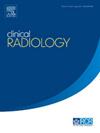髌骨软骨修复后常规磁共振成像和T2定位的评价
IF 1.9
3区 医学
Q2 RADIOLOGY, NUCLEAR MEDICINE & MEDICAL IMAGING
引用次数: 0
摘要
这篇图片综述旨在说明常规磁共振成像(MRI)和T2定位在评估髌骨软骨修复后的作用。通过一系列具有代表性的图像,本综述展示了两种方式的典型成像结果,强调了它们在评估移植物形态、存活和不可存活移植物的早期迹象以及诊断缺陷方面的各自优势。常规MRI对观察宏观变化很有用。然而,T2成像可以进一步了解软骨的生存能力和整合情况,这在常规MRI上是看不到的。总之,这些成像技术提供了一种全面的、无创的方法来监测软骨修复的成功,检测并发症,并指导长期的患者管理。本文章由计算机程序翻译,如有差异,请以英文原文为准。
Evaluation of the patella following cartilage repair on conventional magnetic resonance imaging and T2 mapping
This pictorial review aims to illustrate the role of conventional magnetic resonance imaging (MRI) and T2 mapping in the evaluation of the patella following cartilage repair. Through a series of representative images, this review demonstrates typical imaging findings from both modalities, emphasising their respective strengths in assessing graft morphology, early signs of viable and nonviable grafts, as well as diagnostic pitfalls. Conventional MRI is useful for visualising macroscopic changes. However, T2 mapping provides additional insight into the viability and integration of the cartilage, which may not be visible on conventional MRI. Together, these imaging techniques offer a comprehensive, noninvasive method for monitoring the success of cartilage repair, detecting complications, and guiding long-term patient management.
求助全文
通过发布文献求助,成功后即可免费获取论文全文。
去求助
来源期刊

Clinical radiology
医学-核医学
CiteScore
4.70
自引率
3.80%
发文量
528
审稿时长
76 days
期刊介绍:
Clinical Radiology is published by Elsevier on behalf of The Royal College of Radiologists. Clinical Radiology is an International Journal bringing you original research, editorials and review articles on all aspects of diagnostic imaging, including:
• Computed tomography
• Magnetic resonance imaging
• Ultrasonography
• Digital radiology
• Interventional radiology
• Radiography
• Nuclear medicine
Papers on radiological protection, quality assurance, audit in radiology and matters relating to radiological training and education are also included. In addition, each issue contains correspondence, book reviews and notices of forthcoming events.
 求助内容:
求助内容: 应助结果提醒方式:
应助结果提醒方式:


